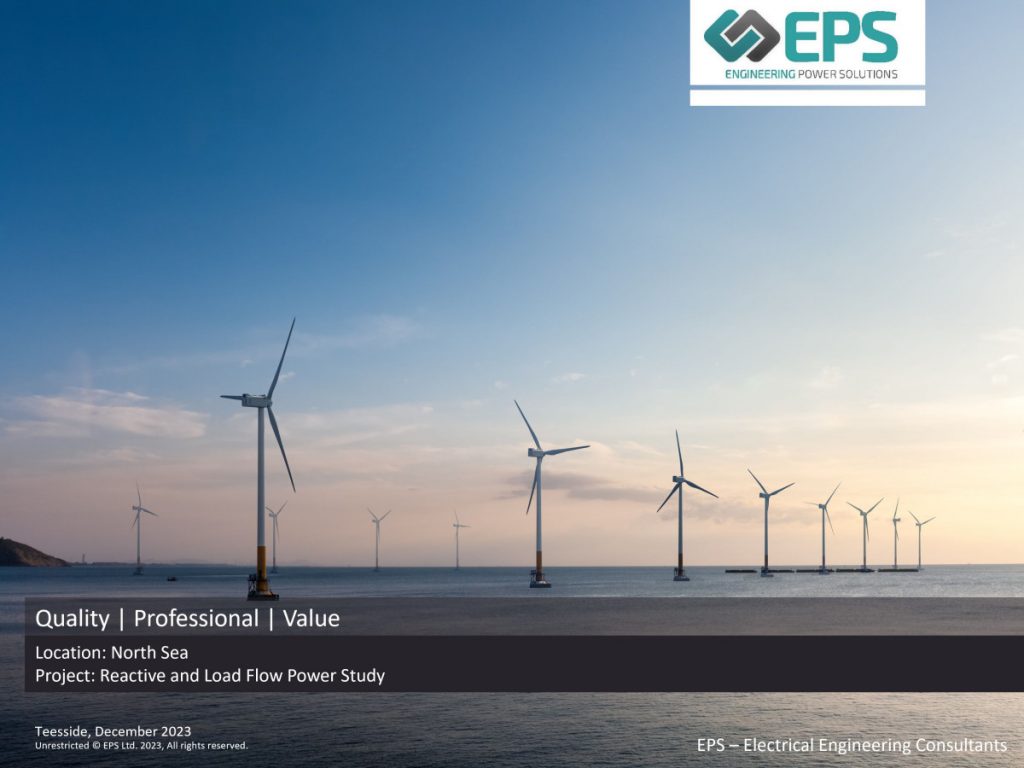With a growing demand for sustainable energy solutions, renewable energy sources, such as solar and wind power, are becoming increasingly important in reshaping the energy landscape. However, because renewable energy is variable according to local climatic conditions, it’s essential to obtain a comprehensive understanding of the impact on the power grid to safeguard power distribution.
In this article, we’ll explore the benefits of load flow analysis as part of power system studies.

What is a Load Flow Analysis?
A Load Flow Analysis is a fundamental study which assesses the steady-state operation of an electric power distribution system. The primary goal of this study is to understand how power flows through the network under various operating conditions. By providing insights into the behaviour of the system, load flow analysis optimises power generation, transmission, and distribution. These studies entail:
- Network Representation – power systems are modelled as an interconnected network encompassing generators, transformers, transmission lines, and loads. Each component is mathematically represented factoring in key parameters including impedance, reactance, and resistance.
- Balancing Power – One of the main goals of these studies is to achieve a delicate balance between power generation and consumption. Engineers are tasked with solving a set of power equations which enable them to determine the flow of real and reactive power in the network.
- Voltage Profile – Load flow analysis provides an in-depth understanding of voltage levels at various points in the power grid. Engineers will conduct thorough assessments of voltage magnitudes and angles to ensure they fall within acceptable limits, guarding against overvoltage or undervoltage.
- Identifying Overloads and Losses – A key aspect of these studies is the identification of potential overloads on transmission lines or transformers. Additionally, they quantify power loss within the system and offer valuable insights for electrical power optimisation.
- Contingency Planning – Load flow analysis allows electrical engineers to assess the potential impact of equipment failure, and outages throughout the entire infrastructure. These insights are essential for maintaining the grid’s reliability under various operating conditions.
So, how can load flow analysis support the integration of renewable energy sources?
Assessing the impact of grid variability
Grid variability and the intermittent nature of solar and wind energy present a significant roadblock in maintaining a reliable power supply. Load flow analysis is the ideal power system study for electrical engineers to better understand how these variations impact voltage levels throughout the power grid.
By assessing the dynamic nature of renewable energy inputs, this study enables the optimisation of grid management. This proactive approach overcomes the challenges posed by intermittency, enabling engineers to identify locations where reactive power compensation devices may be needed to regulate voltage levels. This ensures the safeguarding of electrical equipment and the delivery of a consistent power supply.
Identifying the best places for renewables
Load flow analysis isn’t just about understanding the current state of the grid; it can also be used to identify the ideal locations to position renewable energy sources. By identifying areas with high potential for renewable generation, grid operators can make better-informed decisions about where to invest in clean energy infrastructure for maximum.
When integrating renewables, it’s crucial to determine where they will have the most positive or least negative impacts. Load flow analysis provides the necessary insights to make these assessments, helping grid planners make informed choices to enhance overall system reliability and the cost savings of renewable energy.
Evaluating transmission capacity
The integration of renewable energy sources often requires power to be transmitted from remote locations to where it’s most needed. Load flow analysis can evaluate the capacity of transmission lines and identify if and where upgrades are necessary. By proactively evaluating transmission capacity, overloading can be prevented, and energy can be transported in the most efficient way possible.
Conclusion
To summarise, load flow analysis is a critical tool for power system planning, operation, and optimisation. It provides valuable insights into the functioning of the electrical network, helping engineers make informed decisions to maintain stability, efficiency, and reliability in the power grid. This analysis is particularly essential as power systems evolve to integrate renewable energy sources and address the challenges of a changing energy landscape.
How can EPS help?
Partnering with Engineering Power Solutions will help you optimise your renewable energy integration through expert load flow analysis. To find out more, please get in touch today.










